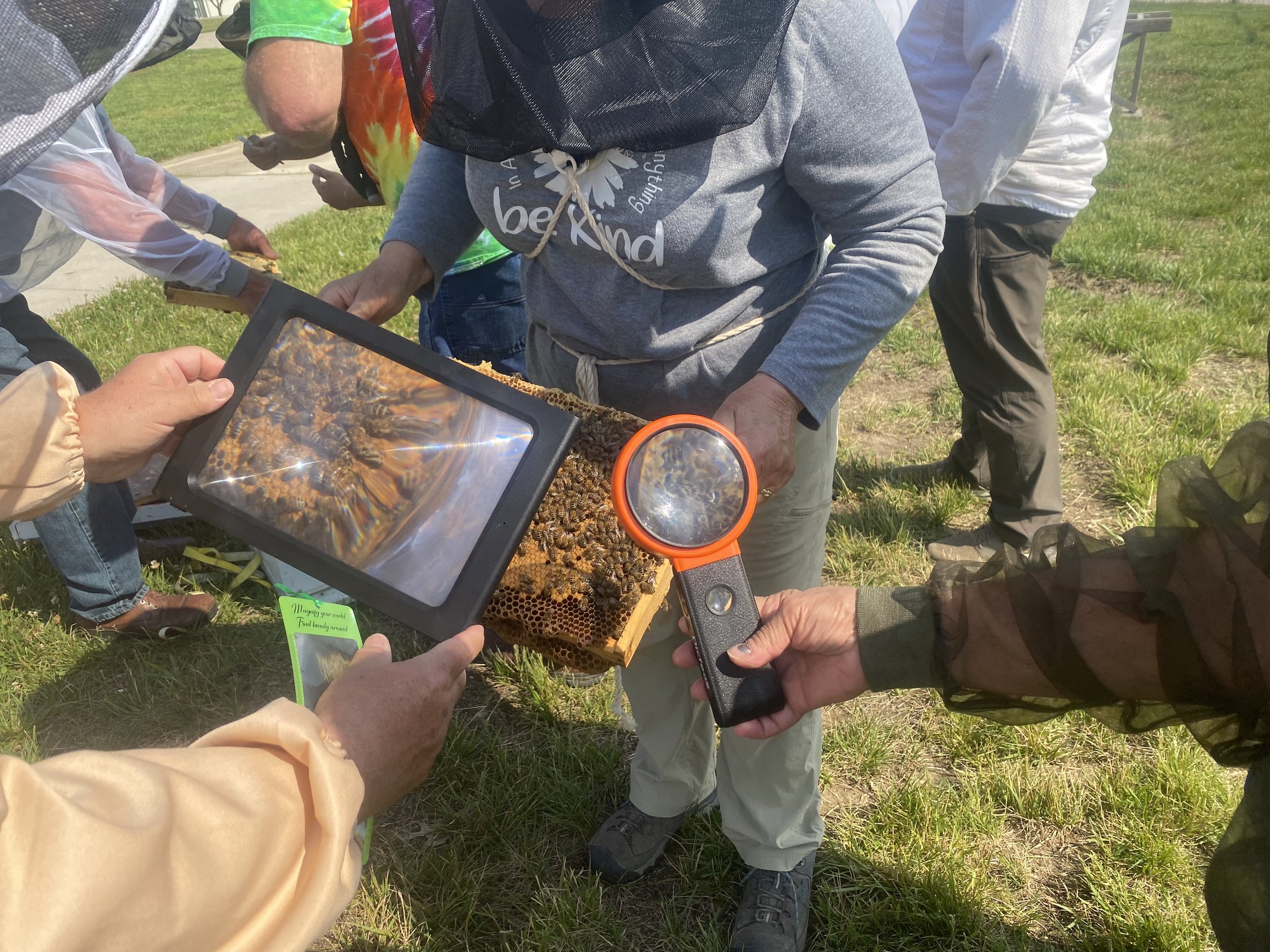Swarm Season
/One of three swarms picked up on the same day. (Charlotte Ekker Wiggins photo)
Swarm Season
Mother’s Day weekend in Missouri usually kicks off the honeybee swarming season. Swarming is the honeybees way to reproduce and is not something to be feared. In most cases, a swarm is at its most docile, worker bees full of honey as scout bees go looking for a new home.
To beekeepers, the swarming season is either something to look forward to or something they try to avoid. Some experienced beekeepers prefer to make their own “swarms” by splitting colonies, which ensures the new colonies have room to grow and are not prompted to split.
Other beekeepers like the excitement of a swarm call and “catch.” Although I split some of my colonies earlier I also enjoy the periodic swarm call, it’s a great opportunity to talk to non-beekeepers about what the bees are doing. And we usually manage to snag a potential new beekeeper or two.
This particular day I had three swarm calls. I passed one on and took two of them, one literally at dusk and this one late in the afternoon. Swarms tend to be on the move as they look for a new home so the call has to be answered quickly if you want to find the bees in the first spot.
The bees in the first call were 5 feet off the ground hanging from a tree branch so it was easy to move them into a hive box.
I had the hive box half full of sugar syrup-coated wax frames in case they were hungry. To entice them to stay. I left the branch in the open space until they settled back in my apiary. One can tell if they are settling in by the sound they are making inside the hive box.
Sneak peek at the inside of the hive box where the bees are settling in. (Charlotte Ekker Wiggins photo)
These are the bees later that same evening, apparently accepting their new home.
The next morning I found the bees doing orientation flights in front of their temporary home so that’s a good sign they like their new accommodations.
I also removed the tree branch and added two more sugar syrup-infused wax frames in the empty space. To make sure they were making the transition, I draped the branch over the top hive entrance.
Once the queen starts laying the swarm will move into the yellow bee hive. (Charlotte Ekker Wiggins photo)
Swarms have a 5-day lifespan to find a new home. In the process, they’ve left their original home full of honey and are ready to build new wax. The tree branch I cut down was covered in pristine white wax, made while the worker bees waited for scout bees to come back with possible new home locations.
Loaded up with honey, swarm worker bees like to build wax. (Charlotte Ekker Wiggins photo)
Swarms have their own management challenges. The queen bee is usually the old queen so it may need a new queen before the season is over. Varroa mites and small hive beetles also travel with the colony so they are not pest free. And no one knows the genetic background of the bees.
In addition, more than half of all swarms don’t make it through their first winter in a hive so they need extra attention to make sure they are strong going into winter with adequate stored honey.
The basics of catching a swarm are in A Beekeeper’s Diary, Self-Guide to Beekeeping.
Although splitting colonies is easier, there’s still a thrill about going out on a swarm call. I hope I never tire of doing it!
For more beekeeping, gardening, cooking and easy home decor tips, subscribe to Garden Notes.





















































